Envirotainer RKN t2 User manual

RKN container,
120005R-()
Doc No. MO-RKN-3062
Version 23
www.envirotainer.com
RKN t2 container
Operations Manual
Doc No:
MO-RKN-3062
Revision:
23
State:
Released
Release Date:
2021-06-24
Approved By:
hanst

Record of revision
RECORD OF REVISION
VER. NO. REVISION
23 REVISED:
• The structure and content of the manual have been revised to increase usability.
Chapters have been rearranged and renamed and information has been moved
between chapters. Texts and illustrations have been revised, rearranged and
supplemented. These changes are not described in any more detail in the revi-
sion history unless specifications have been changed, completely new informa-
tion has been added or entire chapters have been removed.
•2.1.2 Symbols on the container: New chapter.
• Former 2.5 Exposure to high humidity: Removed chapter.
•3.1 Orientation conventions: New chapter.
•3.2 Overview: New chapter.
•3.4 Attachment points for security seals: New chapter.
•3.7 Operating conditions: Added information about container performance in
relation to different ambient temperature ranges.
•3.8 Battery duration: New chapter.
•4.4.4 Mounting or removing batteries: Clarified that only 8 batteries are neces-
sary during pre-conditioning with dry ice.
•4.4.5.2 Dry ice best practices: New chapter.
•4.4.5.3 Using wrapped or unwrapped dry ice (info moved from 7. Dry ice ta-
bles): Revised the recommendation for set temp + 5 °C; wrapped dry ice shall
now be used for ambient temperatures of +10 to +20 °C.
•4.4.6.2.2 Using dry ice: Clarified that only 8 batteries are necessary for pre-
conditioning.
•4.4.8 Loading cargo: Added instruction to replace the batteries used during pre-
conditioning with dry ice.
•4.4.12.10 Check date of next control unit verification: Revised information
about when verification must be performed.
•5. Troubleshooting: Converted the chapter to table format and supplemented
the information.
Doc No:
MO-RKN-3062
Revision:
23
State:
Released
Release Date:
2021-06-24
Approved By:
hanst

Record of revision
RECORD OF REVISION
VER. NO. REVISION
REVISED, CONTINUED:
•7. Dry ice tables:
• Revised the table for set temperature +5 °C.
• Removed the table for set temperature +15 °C.
•8. Technical specification:
• Changed the definition of the door opening dimensions from (W x H) to (L x H).
• Changed the definition of the main loading space dimensions from (L x W x H)
to (Lload x Wload x Hload).
• Changed the definition of the additional loading space dimensions from
(L x W x H) to (l x w x h).
• Corrected the door opening dimensions in inches (switched place on existing
dimensions).
• Added aircraft A350 and B787 to the list of aircrafts for which the container is
suitable.
• Former 8 Alerts and alarms: Removed chapter (information incorporated into 5.
Troubleshooting).
•8.1 Definition of dimensions: New chapter defining what is the length (L), width
(W) and height (H) of the container.
•8.2 Loading space:
• Clarified that the additional loading space is not recommended for use.
• Removed dimensions that are already presented in 8. Technical
specification.
• Removed the container knee to dry ice bunker dimension.
• Former 11.1 External dimensions: Removed chapter.
• Former 13 RKN t2 container checklist: Removed chapter. New checklists avail-
able in 4.1 Preparing a shipment,4.2 Shipping and 4.3 Finishing a shipment.
Doc No:
MO-RKN-3062
Revision:
23
State:
Released
Release Date:
2021-06-24
Approved By:
hanst

Intentionally left blank
Doc No:
MO-RKN-3062
Revision:
23
State:
Released
Release Date:
2021-06-24
Approved By:
hanst

TABLE OF CONTENTS
1. INTRODUCTION.......................................................................................................................... 1
1.1 Intended use............................................................................................................................1
1.2 Manufacturer............................................................................................................................1
1.3 Contact....................................................................................................................................1
1.4 How to use the manual .............................................................................................................1
2. SAFETY......................................................................................................................................... 2
2.1 Symbols ..................................................................................................................................2
2.1.1 Symbols in the manual ................................................................................................2
2.1.2 Symbols on the container.............................................................................................3
2.2 Safety instructions ....................................................................................................................4
2.2.1 General ......................................................................................................................4
2.2.2 Handling dry ice ..........................................................................................................4
3. CONTAINER DESCRIPTION..................................................................................................... 5
3.1 Orientation conventions ............................................................................................................5
3.2 Overview .................................................................................................................................6
3.3 Refrigeration system operation ..................................................................................................7
3.4 Attachment points for security seals...........................................................................................8
3.5 Temperature control capacity.....................................................................................................8
3.6 Loading capacity ......................................................................................................................9
3.7 Operating conditions.................................................................................................................9
3.8 Battery duration...................................................................................................................... 11
4. USING THE CONTAINER ........................................................................................................ 12
4.1 Preparing a shipment..............................................................................................................13
4.2 Shipping ................................................................................................................................14
4.3 Finishing a shipment...............................................................................................................15
4.4 Operating instructions.............................................................................................................16
→
Doc No:
MO-RKN-3062
Revision:
23
State:
Released
Release Date:
2021-06-24
Approved By:
hanst
Other manuals for RKN t2
1
Table of contents
Other Envirotainer Industrial Equipment manuals
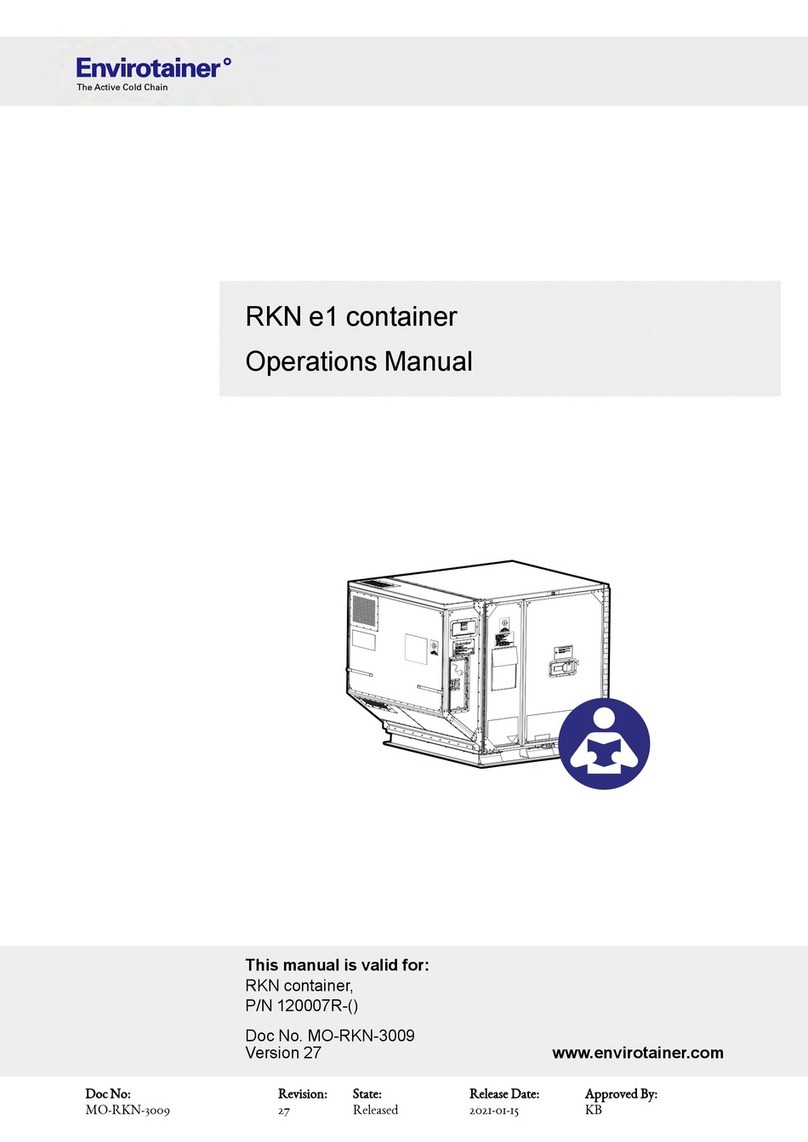
Envirotainer
Envirotainer RKN e1 User manual
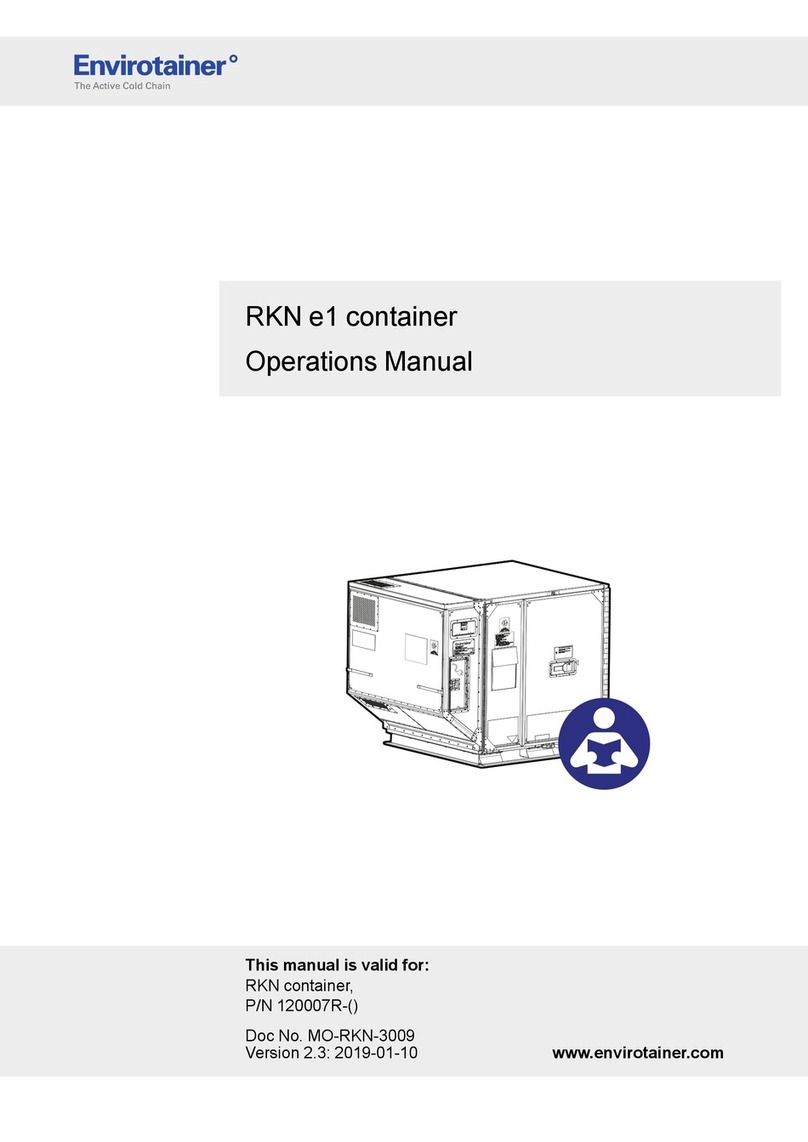
Envirotainer
Envirotainer RKN e1 User manual

Envirotainer
Envirotainer RKN t2 User manual
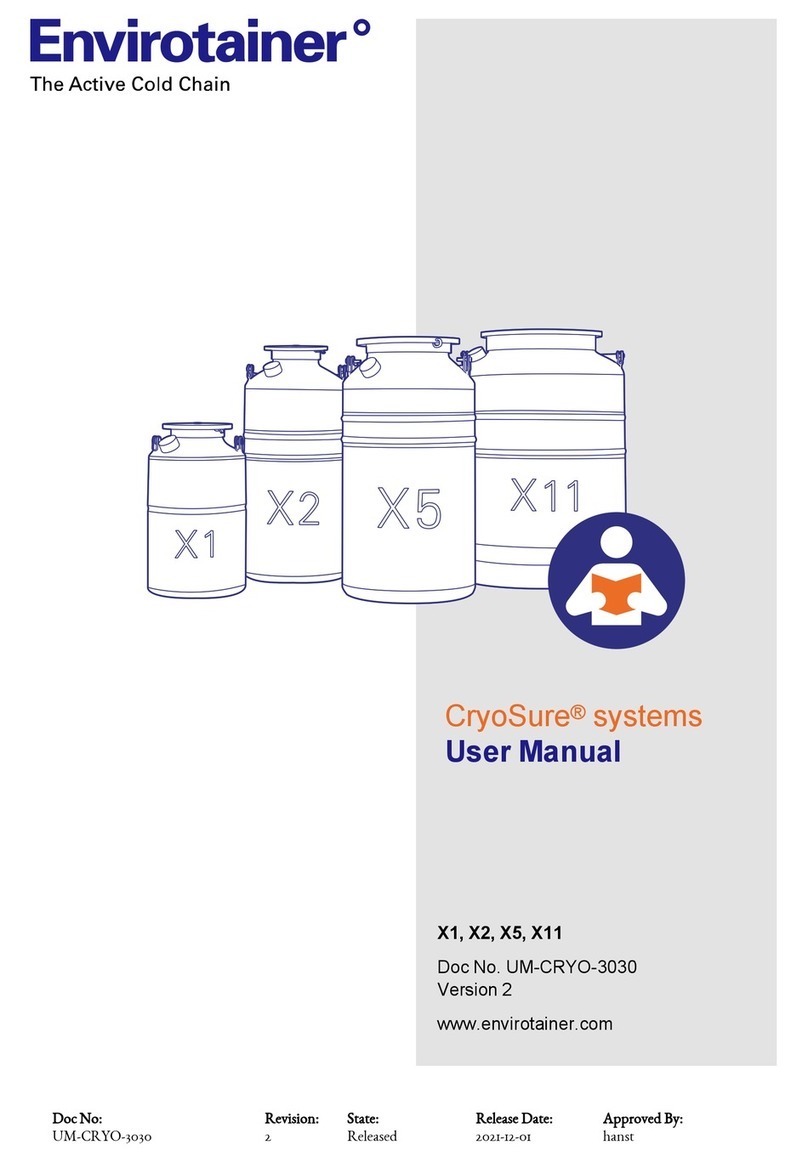
Envirotainer
Envirotainer CryoSure X1 User manual
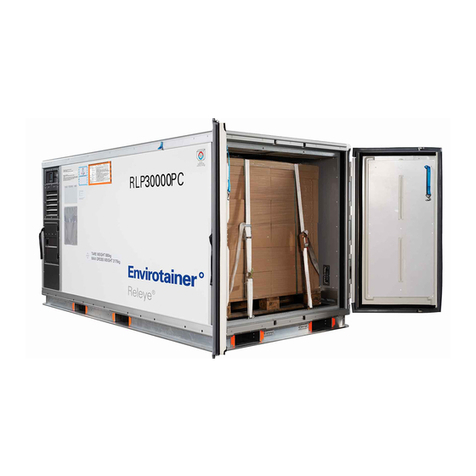
Envirotainer
Envirotainer Releye RLP 160020R User manual

Envirotainer
Envirotainer RKN e1 User manual
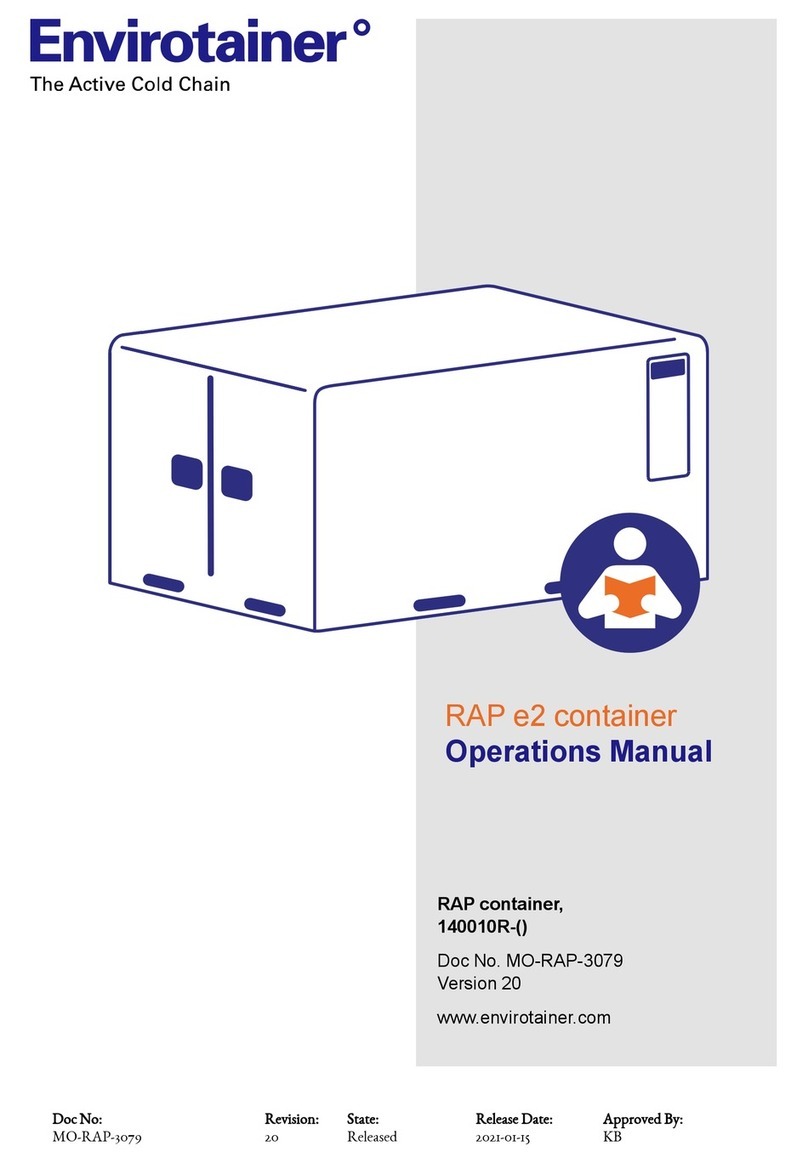
Envirotainer
Envirotainer RAP e2 User manual

















